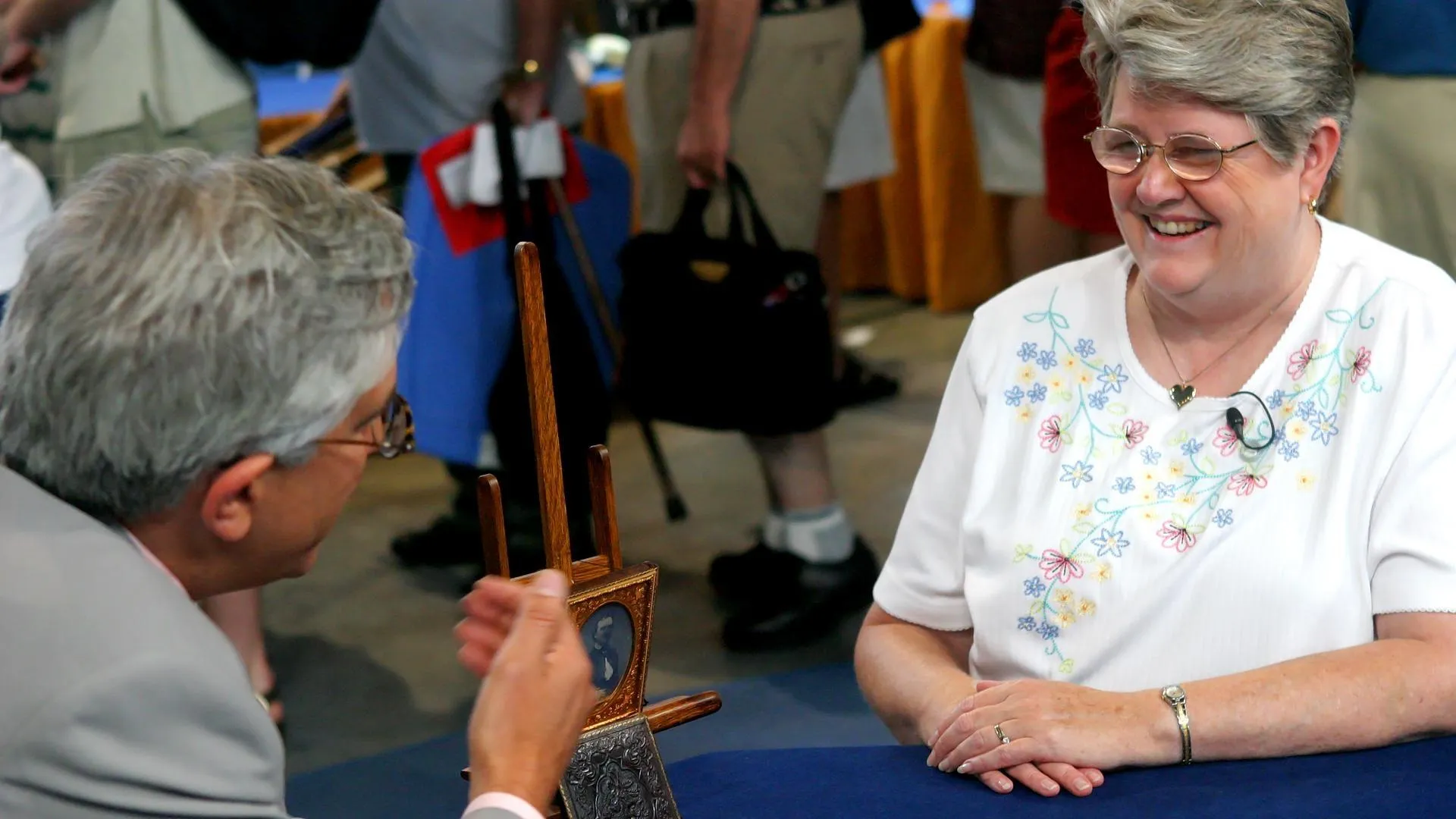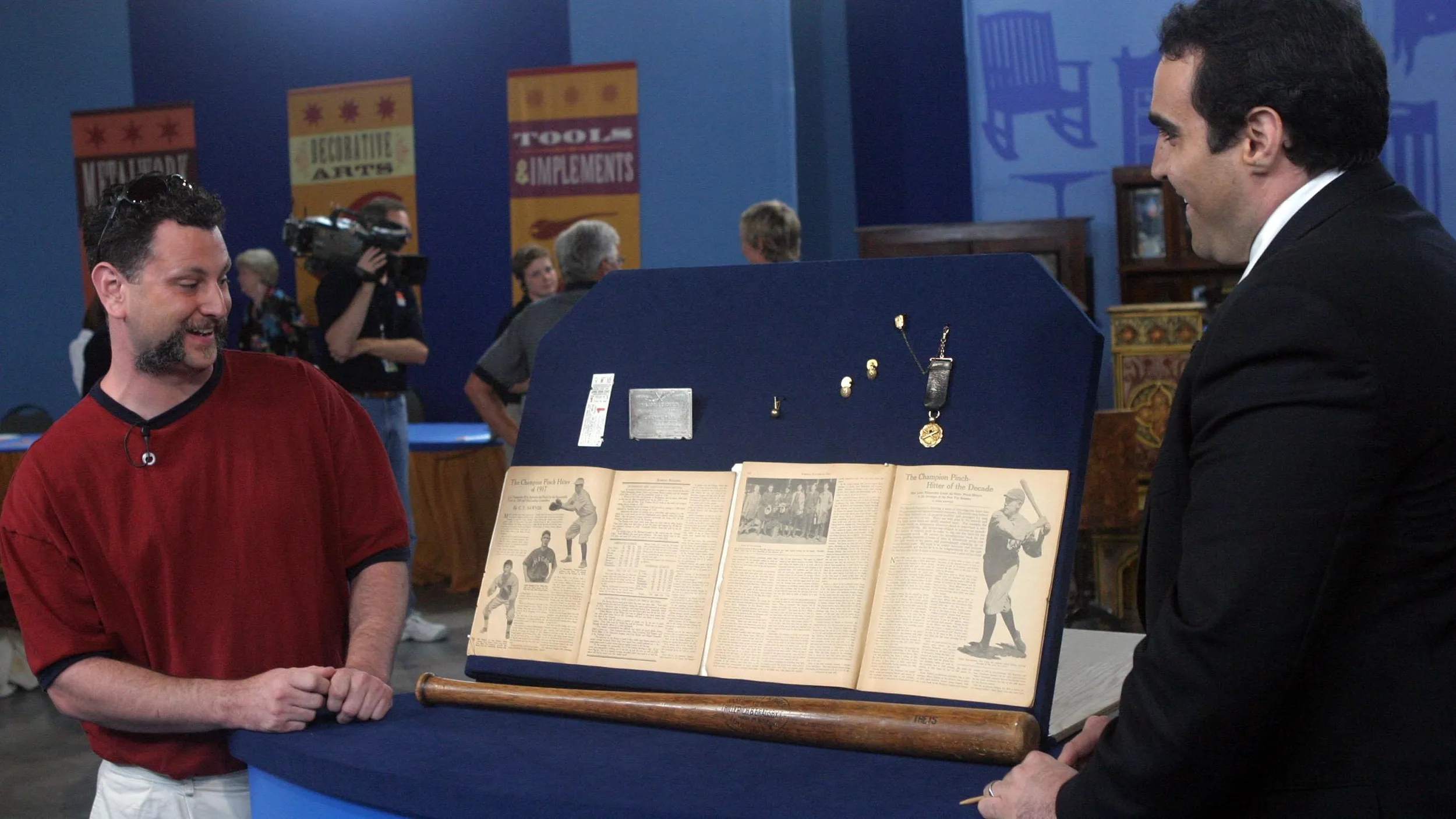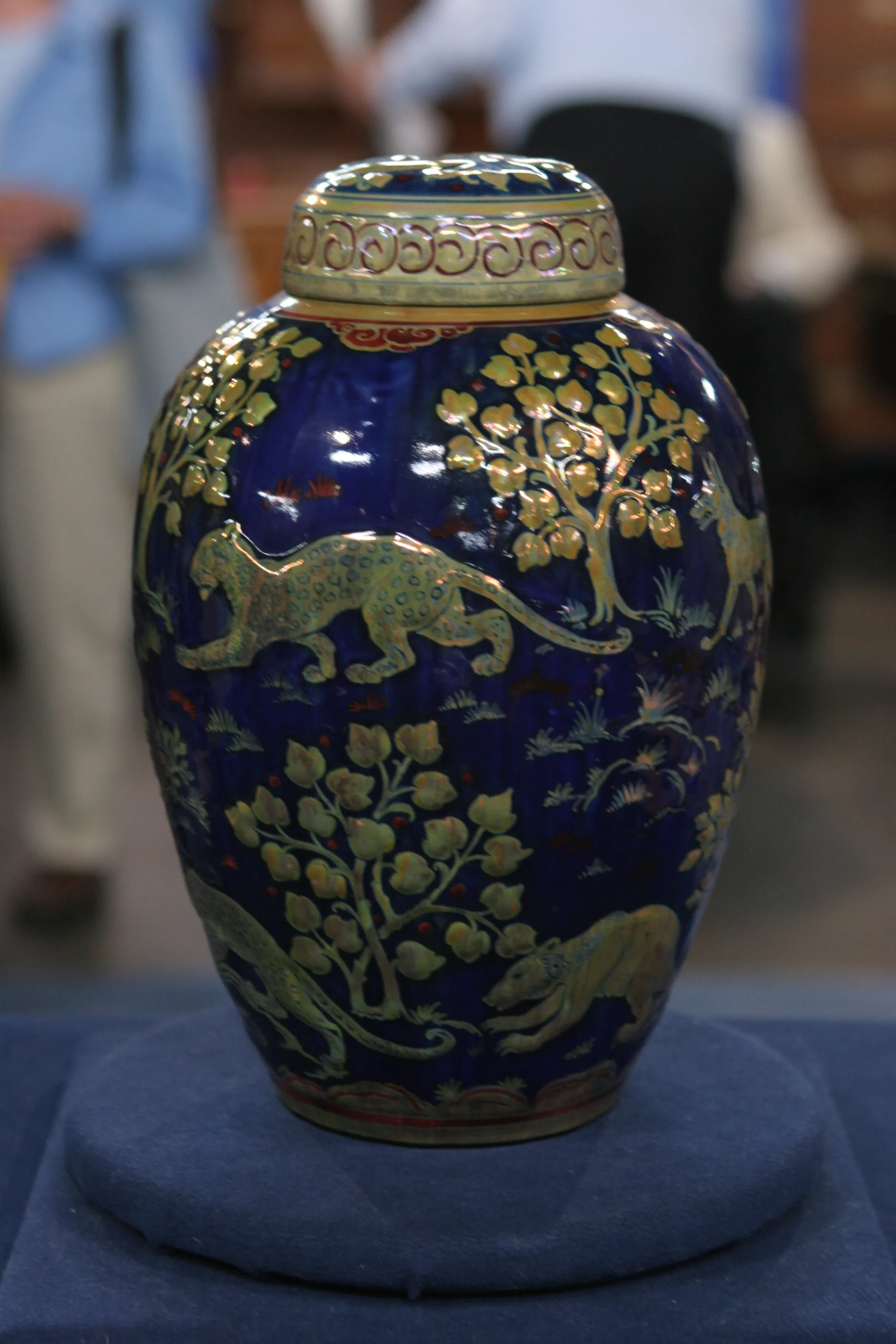GUEST: Well, I found it in Walnut, Iowa, town of about 750 people, in a little junk shop-slash- antique shop. And just happened to like the image. Took it home and thought it looked like something I had in one of my books, which... I do daguerreotype research, and it looked very much like Edgar Allan Poe.
APPRAISER: And were there any other photographs, or any other...?
GUEST: There was a pile of boxes in a showcase.
APPRAISER: Uh-huh.
GUEST: And I went through a few of them. Just thought this was interesting.
APPRAISER: And what did you have to pay for it?
GUEST: $96, including tax.
APPRAISER: $96 including tax in Walnut, Iowa. And you're right, it's a daguerreotype, and as you already know, it is a daguerreotype of Edgar Allan Poe. Now, Poe was born in 1809, and he died in 1849, and you're a daguerreotype collector, right?
GUEST: Yes, I am.
APPRAISER: So when was the daguerreotype first introduced to America from France?
GUEST: 1939.
APPRAISER: 1839.
GUEST: Oh, I'm sorry—
APPRAISER: 1839.
GUEST: 1839.
APPRAISER: You're okay-- 1839.
GUEST: Only 100 years off.
APPRAISER: So by when were daguerreotypes not being taken?
GUEST: They slowed down in about 18... early '50s.
APPRAISER: About mid-1850s, they were basically gone.
GUEST: Mid-1850s. Yes.
APPRAISER: So Edgar Allan Poe, remember, died in 1849, so there's a ten-year period within the Daguerreian area of photography during which he could have had his picture taken. There are only six Daguerreian portraits of Edgar Allan Poe known to exist. And I want to point out, it's got a little damage on the face here. Somebody has wiped that at one point, they put their finger on it and moved it across it, and as you know, as a daguerreotype collector, you never want to touch a daguerreotype plate.
GUEST: You don't even blow on it.
APPRAISER: You don't even blow on it. Even with this damage, I would estimate this daguerreotype somewhere between-- and I'll be conservative, it could go for more-- probably somewhere between $30,000 and $50,000.
GUEST: (laughing) Wow.
APPRAISER: Because of who Poe was...
GUEST: Yes, yes.
APPRAISER: ...and because of the scarcity of his portraiture.
GUEST: Well, I'm thrilled. (laughing) I liked the picture anyway, but now I really like it.












